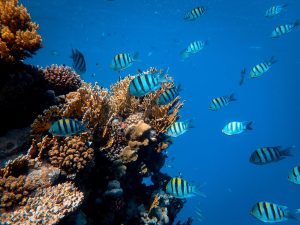Having a lush and vibrant underwater environment is the dream of every aquarist. To achieve this, one essential factor to consider is the proper dosing of carbon dioxide (CO2) in your aquarium. In this article, we will explore the various aspects of effective CO2 dosing and provide a natural approach to maintaining a healthy and thriving aquatic ecosystem.
Understanding the Importance of CO2 Dosing
CO2 is essential for photosynthesis, the process by which plants convert light energy into chemical energy to fuel their growth. In an aquarium, plants rely on dissolved CO2 to thrive and produce oxygen, which is crucial for the well-being of aquatic inhabitants. By providing an adequate supply of CO2, you can stimulate plant growth, prevent algae overgrowth, and create a visually stunning aquarium.
The Natural Approach: Balanced Carbon Dioxide Levels
When it comes to CO2 dosing, it is crucial to strike a balance. Too little CO2 will impede plant growth, resulting in weak and pale foliage. On the other hand, excess CO2 can cause fluctuating pH levels, negatively impacting the overall health of your aquarium. Therefore, a natural and effective approach is to maintain a stable and optimal CO2 concentration.
One way to achieve this is by implementing a CO2 diffusion system. Through this system, CO2 is introduced into the aquarium, ensuring a consistent supply for plants. There are various methods for diffusing CO2, such as using a CO2 reactor or a CO2 diffuser. Choose a method that suits your aquarium setup and provides efficient distribution of CO2 throughout the water column.
Monitoring CO2 Levels
To ensure effective CO2 dosing, regular monitoring of CO2 levels is essential. Invest in a reliable CO2 monitoring system or test kit to measure the concentration of dissolved CO2 in your aquarium. Aim for a concentration of around 20-30 parts per million (ppm), as this range is optimal for plant growth. However, it’s crucial to consider the specific needs of your plants and fish species, as some may require slightly different CO2 levels.
Additionally, it is vital to monitor the pH level of your aquarium, as CO2 can influence pH. Ideally, aim for a stable pH range of 6.8 to 7.2, which allows for optimal CO2 absorption and utilization by plants while ensuring the well-being of your aquatic inhabitants.
Balancing Light and CO2
In achieving an efficient CO2 dosing strategy, it is necessary to consider the balance between light and COBoth factors are crucial for photosynthesis. While plants require CO2 to produce energy, they also need an adequate light source to convert that energy. By adjusting the intensity and duration of light, you can create an environment where your plants can effectively utilize the supplied CO2, resulting in optimal growth.
Avoiding excessive light or providing insufficient light can lead to an imbalance in the photosynthesis process and may result in algae overgrowth. Finding the right balance between light and CO2 is essential for maintaining a thriving aquatic ecosystem.
FAQ Frequently Asked Question
How often should I dose CO2 in my aquarium?
CO2 dosing should be continuous during the daylight period to ensure a consistent supply for plants.
Can I over-dose CO2 in my aquarium?
Yes, over-dosing CO2 can lead to fluctuations in pH levels and may have detrimental effects on fish and other aquatic inhabitants. It is important to monitor and maintain optimal CO2 concentration.
Do all plants require the same amount of CO2?
No, different plant species have varying CO2 requirements. It is important to research and understand the specific needs of the plants in your aquarium to ensure effective dosing.
What if I have a heavily stocked aquarium?
In heavily stocked aquariums, the demand for CO2 may be higher due to increased oxygen consumption by fish. Consider implementing additional CO2 diffusion methods or increasing the dosage to meet the demand.
Can I use natural methods to enhance CO2 levels in my aquarium?
Yes, there are natural methods to enhance CO2 levels, such as utilizing CO2-rich substrates or incorporating live plants that naturally produce COHowever, these methods may not provide sufficient CO2 for heavily planted aquariums.
By following these guidelines and implementing a natural approach to CO2 dosing, you can create an ideal aquatic environment that promotes healthy plant growth and a thriving ecosystem. Remember to monitor and adjust CO2 levels regularly to ensure the well-being of your plants and aquatic inhabitants.

